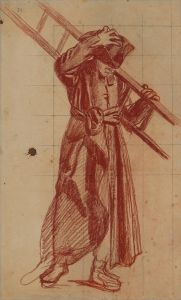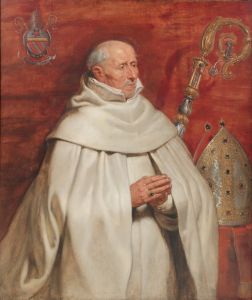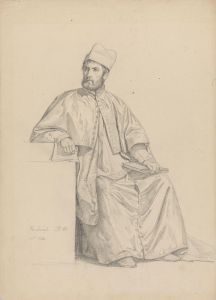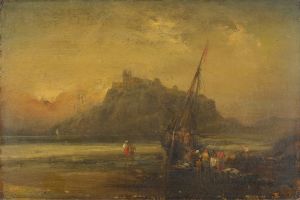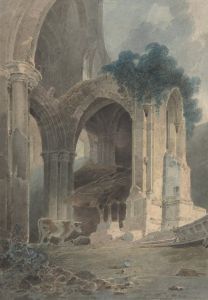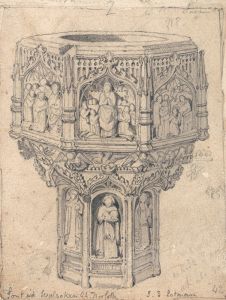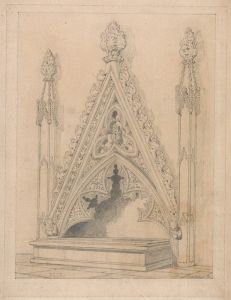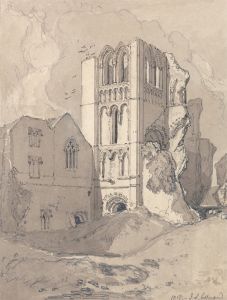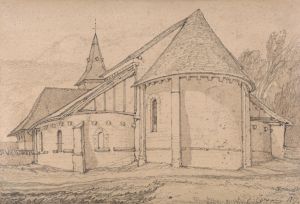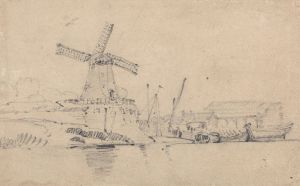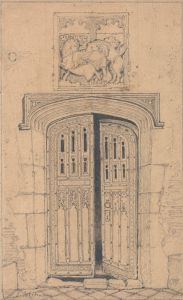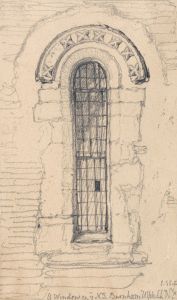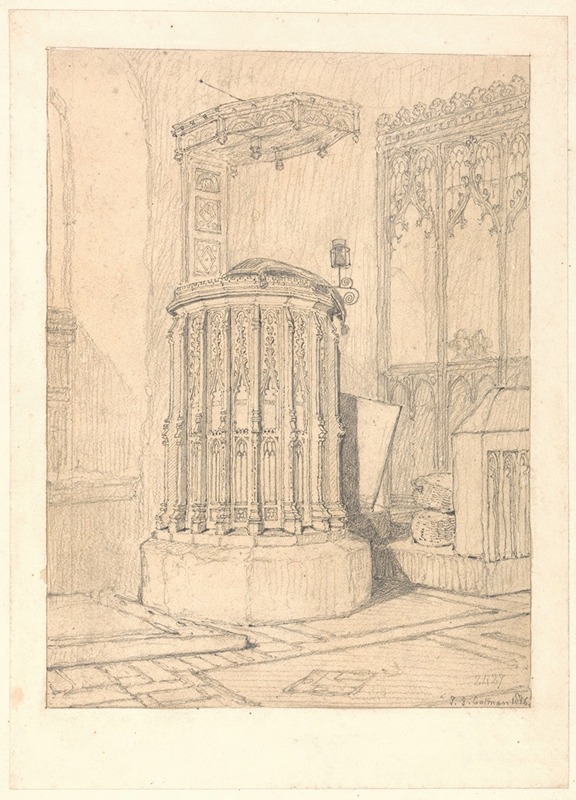
Pulpit in South Burlingham Church, Norfolk
A hand-painted replica of John Sell Cotman’s masterpiece Pulpit in South Burlingham Church, Norfolk, meticulously crafted by professional artists to capture the true essence of the original. Each piece is created with museum-quality canvas and rare mineral pigments, carefully painted by experienced artists with delicate brushstrokes and rich, layered colors to perfectly recreate the texture of the original artwork. Unlike machine-printed reproductions, this hand-painted version brings the painting to life, infused with the artist’s emotions and skill in every stroke. Whether for personal collection or home decoration, it instantly elevates the artistic atmosphere of any space.
John Sell Cotman (1782–1842) was a prominent English painter, illustrator, and leading member of the Norwich School of painters, a movement known for its focus on landscapes and architectural subjects. Among his works is the drawing or painting titled Pulpit in South Burlingham Church, Norfolk. This artwork reflects Cotman’s interest in ecclesiastical architecture and his skill in capturing intricate details with precision and clarity.
The piece depicts the pulpit within St. Edmund's Church in South Burlingham, a small village in Norfolk, England. The church itself is a medieval structure, notable for its historical and architectural significance. Cotman’s rendering of the pulpit showcases his ability to document architectural elements with a combination of artistic sensitivity and technical accuracy. His work often served as both artistic expression and historical record, preserving details of buildings and interiors that might otherwise be overlooked or lost over time.
Cotman was known for his mastery of line and form, and this work is no exception. The pulpit is likely depicted with careful attention to its design, including any carvings, patterns, or structural features that characterize its craftsmanship. Such works were often created as part of Cotman’s broader interest in documenting the architectural heritage of Norfolk and other regions he visited.
This artwork is part of Cotman’s extensive body of work that includes drawings, watercolors, and prints. Many of his architectural studies were produced during his travels across England, where he meticulously recorded churches, castles, and other historic sites. These works not only highlight his artistic talent but also contribute to the historical understanding of the sites he depicted.
The exact medium and current location of Pulpit in South Burlingham Church, Norfolk are not specified in available records, but it is consistent with Cotman’s practice to work in pencil, ink, or watercolor for such studies. His works are held in various collections, including the British Museum, the Victoria and Albert Museum, and regional galleries, although it is unclear whether this specific piece is part of a public collection or remains in private hands.
Cotman’s contributions to art and architectural documentation have been widely recognized, and his works continue to be studied and appreciated for their artistic and historical value. Pulpit in South Burlingham Church, Norfolk is a testament to his dedication to capturing the beauty and intricacy of England’s architectural heritage.





